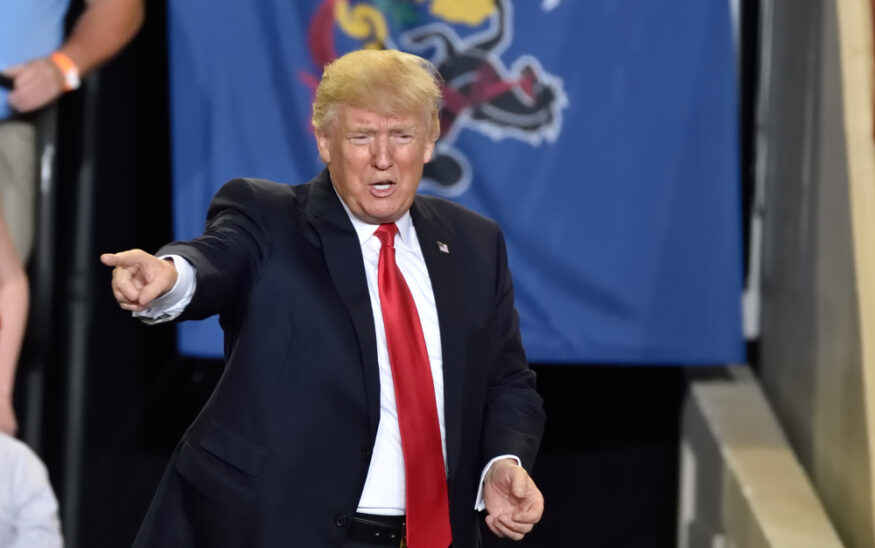Is the U.S. Entering a Trade Spat or a Trade War?
The aftermath of President Donald Trump's proposed tariff on imported steel and aluminum
KC Mathews //March 20, 2018//


Is the U.S. Entering a Trade Spat or a Trade War?
The aftermath of President Donald Trump's proposed tariff on imported steel and aluminum
KC Mathews //March 20, 2018//

President Donald Trump recently announced a 25 percent tariff on all imported steel and a 10 percent tariff on all imported aluminum, delivering on a campaign promise. The question being asked is, “Are we headed toward a trade spat or a war?”
While numerous trade spats have occurred in history, there have not been many trade wars. One reason these events are so infrequent is protectionism measures can lead to slower economic growth, less effective allocation of resources, reduced productivity growth and higher prices.
U.S. Commerce Secretary Wilbur Ross said, “This is not a big deal,” while Trump has said, “Trade wars are good and easy to win.” If this is a trade spat, the Commerce Secretary may be correct. But, if this turns into a trade war, the president may be incorrect.
TRADE SPAT + TRADE WAR DIFFERENCES
Trade spats are temporary tariffs with minor economic and financial market impacts and have been numerous throughout history. Many former presidents – Johnson, Carter, Nixon, Reagan, Bush, Obama and Trump, to name a few – have used trade spats to some degree for different reasons.
Trade wars, on the other hand, are unfriendly to the stock market and have been fewer and further between. This could be because of the dangerous impact they have on the economy and financial markets.
One example is the Smoot-Hawley Act President Herbert Hoover signed June 17, 1930. This increased U.S. tariffs on more than 20,000 imported goods, effectively hiking charges in an already high tariff environment. Within two years, two dozen countries imposed similar tariffs, resulting in a good old trade war, effectively prolonging the Great Depression.
WHERE ARE WE TODAY – SPAT OR WAR?
As of today, we are labeling this a trade spat.
Steel and aluminum account for less than 2 percent of U.S. total imports, only 0.3 percent of U.S. GDP. As such, we expect a tariff on these products (exempting trade partners Canada and Mexico) will have very little impact on the U.S. economy. However, the risk lies in tariffs being applied more broadly, or if there is retaliation from our trading partners.
If this situation escalates into a trade war, it’s a different story.
The S&P 500 generates 30 percent of its revenue overseas, and its supply chain is globally integrated. To help illustrate, consider this hypothetical situation: If tariffs curb foreign sales by 2 percent, and import costs increase by 15 percent, this would imply a 6 percent hit to S&P 500 earnings.
FREE TRADE IS LIKE UNICORNS + LEPRECHAUNS
In today’s globalized economy free trade simply doesn’t exist. The U.S. runs a significant trade deficit, importing much more than we export. U.S. tariffs on foreign goods are consistently lower than foreign tariffs on U.S. goods. Simply put, the U.S. has leverage in negotiating trade agreements.
For example, imports of Chinese goods and services are 2.65 percent of U.S. GDP. Exports to China are only 0.96 percent, with half being agricultural products. Putting a tariff on these products may increase consumer costs to China.
Another example is the car industry. China and India impose a 25 percent tariff on all imported automobiles from the U.S. The U.S. only has a 2.5 percent import duty on Chinese cars. Again, free trade is a misnomer.
Trade partners, could retaliate by selling U.S. Treasuries, but that would depreciate the dollar. U.S. exporters are the beneficiary of a weak dollar. In many cases tariffs, or a weak dollar, propel you to the same end point – they just use different paths.
WHAT HAPPENS NOW?
A genuine trade war would undoubtedly hurt the U.S., but a minor spat would not. At this time, we believe the current narrative is part of the president’s negotiation strategy, and this situation will fall under the trade spat definition.
Additionally, the probability of a trade spat ending the equity bull market is relatively low. Monetary and fiscal stimulus will bolster economic activity in the U.S. through 2018. Additionally, economic strength, along with tax reform, will accelerate corporate earnings, sending equity prices higher. We still expect close to three percent real GDP this year and for the S&P 500 to be 3000 by year-end.






















